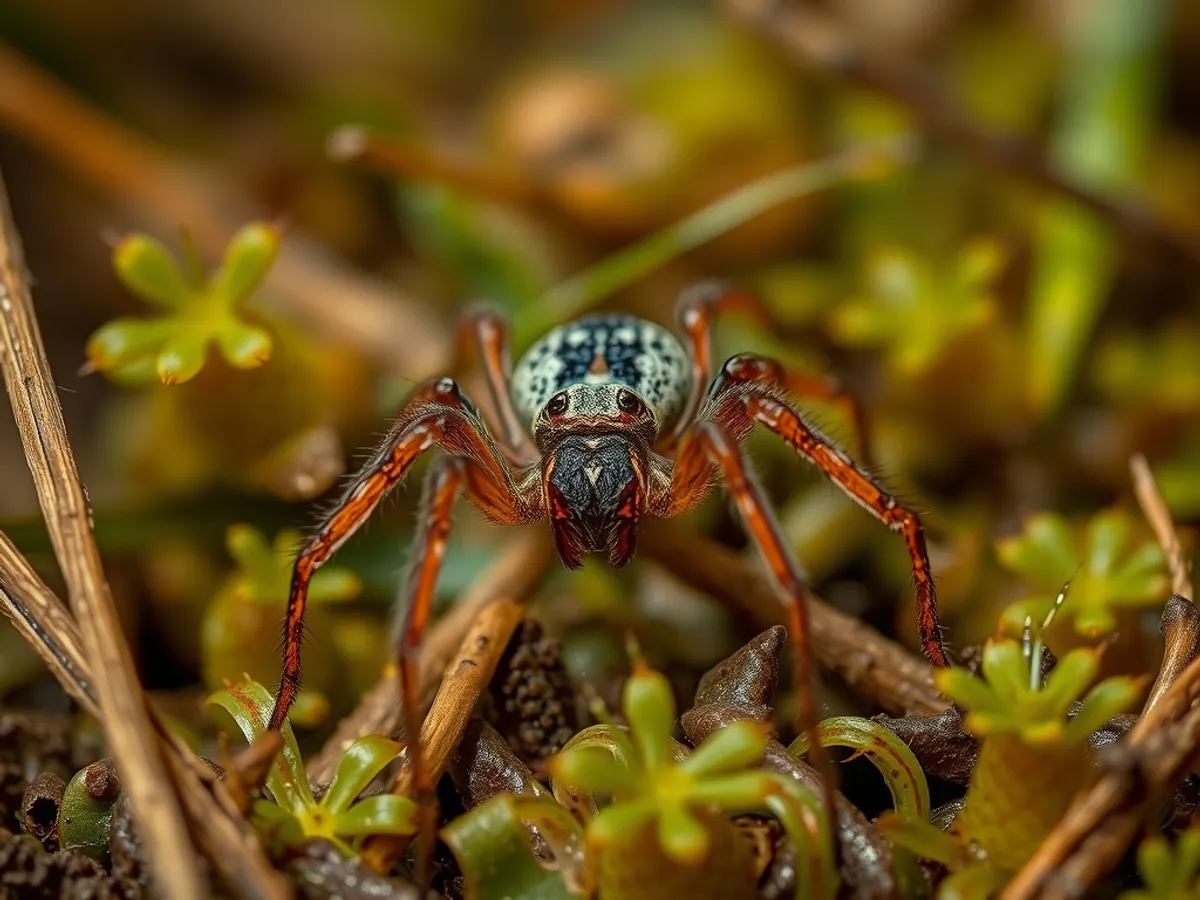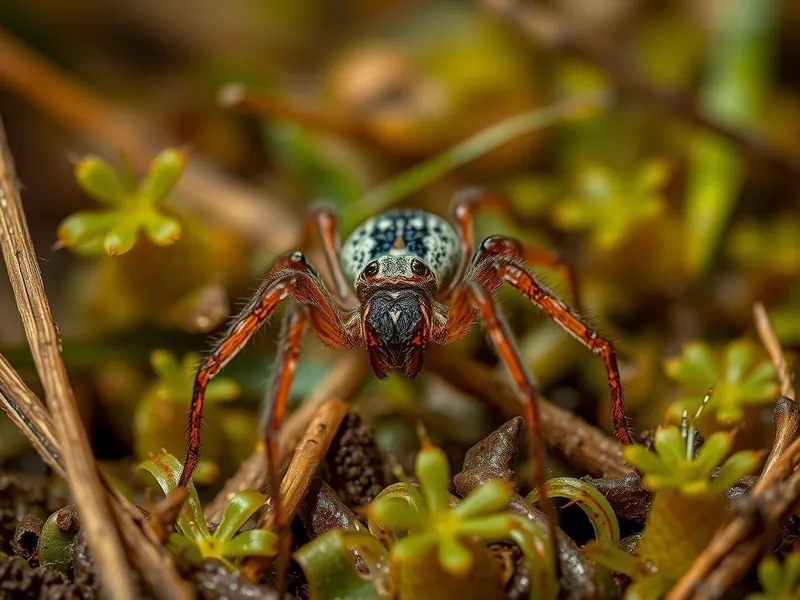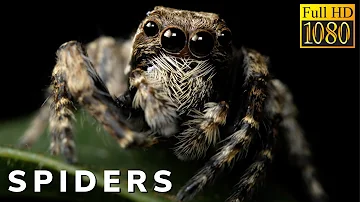
Sundew Spider
Hibana futilis

Meet the Sundew Spider
The Sundew Spider (Hibana futilis) is a small, agile hunting spider commonly found in North and Central America. It is named for its resemblance to the sticky-leaved sundew plant, as it often waits motionless for prey on vegetation. Unlike web-building spiders, the Sundew Spider actively hunts small insects, using its speed and keen eyesight to capture them. Its pale yellowish to tan coloration provides excellent camouflage among leaves and grasses.
Classification
Invertebrate
Habitat
Forests and grasslands
Diet
Carnivore
Lifespan
1-2 years
Conservation
Least Concern
Weight
0.01-0.03 grams
📖Fascinating Facts
Active Hunter
Unlike many spiders, the Sundew Spider does not build a web to catch prey but instead stalks and pounces on insects.
Plant Mimic
Its coloration and hunting behavior inspired its common name, as it mimics the trapping strategy of the sundew plant.
Natural Pest Controller
Sundew Spiders help maintain ecological balance by preying on crop-damaging insects like aphids.
📋Detailed Description
The Sundew Spider (Hibana futilis) is a small, agile araneomorph spider belonging to the family Anyphaenidae, commonly known as ghost spiders. Adult body length typically ranges from 4 to 8 mm, with females generally larger than males. Its cephalothorax and abdomen are pale yellow to tan, often with faint longitudinal markings that enhance its camouflage among grasses and leaves. The spider's legs are long, slender, and covered in fine setae, aiding in both rapid movement and tactile sensing of its environment. Unlike orb-weavers, Hibana futilis does not construct capture webs; instead, it is a cursorial hunter, relying on its acute vision and sensitive mechanoreceptors to detect and ambush prey. Its chelicerae are well-developed for subduing small arthropods, primarily insects such as aphids, caterpillars, and flies. The species is primarily nocturnal, seeking shelter in rolled leaves or under bark during the day. Sundew Spiders are solitary, with individuals maintaining distinct territories, especially during the breeding season. Their life cycle includes egg, spiderling, and adult stages, with females producing several egg sacs per season. The species is widespread across forest edges, grasslands, and even suburban gardens, where its cryptic coloration and nimble movements make it difficult to spot.
💡 Did you know?
Despite its small size, the Sundew Spider can leap several times its body length to ambush prey.
🔬Research & Sources
🎭Behavior & Social Structure
Hibana futilis exhibits predominantly nocturnal activity, emerging at dusk to hunt actively on vegetation or the ground. It employs a sit-and-wait strategy, remaining motionless until prey comes within striking distance, then lunging with remarkable speed. The spider uses its front legs to sense vibrations and air currents, allowing it to detect both prey and potential threats. Feeding involves subduing prey with venomous fangs and external digestion before ingesting liquefied tissues. Social interactions are minimal outside of mating; individuals are territorial and may display threat postures or retreat if confronted by conspecifics. During the day, the Sundew Spider seeks refuge in silk retreats constructed in leaf litter or under bark. Molting occurs several times before maturity, with juveniles exhibiting similar hunting behaviors as adults.
👶Reproduction & Life Cycle
Reproduction in Hibana futilis typically occurs in late spring and early summer. Males locate females by following pheromone trails and engage in courtship displays that involve leg tapping and vibratory signals to avoid being mistaken for prey. After successful mating, females lay eggs in silken sacs, which are often attached to the undersides of leaves or hidden in crevices. Each egg sac may contain 20–50 eggs, and a single female can produce multiple sacs during the breeding season. Incubation lasts approximately 2–3 weeks, depending on temperature and humidity. Spiderlings disperse shortly after hatching, exhibiting limited parental care; the female may guard the egg sac but does not tend to the young after emergence. Sexual maturity is typically reached within one year, and adults may live for up to two years in favorable conditions.
🛡️Adaptations & Survival
Hibana futilis possesses several adaptations for its cursorial hunting lifestyle. Its cryptic coloration provides effective camouflage against predators and prey alike, while its long, sensitive legs are equipped with trichobothria—specialized hairs that detect minute air movements. The spider's keen vision, especially in low-light conditions, is facilitated by its arrangement of eight eyes. Its venom is potent enough to immobilize small insects rapidly, minimizing the risk of injury during predation. Silk production is primarily used for constructing retreats and egg sacs rather than for prey capture. Behavioral plasticity allows the species to exploit a variety of microhabitats, from leaf litter to shrubs and grasses, increasing its ecological resilience.
📚Research Sources
🎨Cultural Significance
The Sundew Spider holds limited direct significance in human culture, lacking prominent roles in folklore or symbolism. However, it is occasionally referenced in entomological literature and educational materials due to its distinctive hunting behavior and resemblance to the carnivorous sundew plant. In ecological terms, it contributes to natural pest control by preying on agricultural pests, indirectly benefiting human interests.
🔬Recent Research & Discoveries
Recent studies on Hibana futilis have focused on its role as a biological control agent in agroecosystems, particularly in citrus groves and ornamental plantings where it preys on pest insects. Ongoing research investigates its sensory biology, including the function of trichobothria and visual acuity in prey detection. Molecular phylogenetic analyses have clarified its relationship within the Anyphaenidae family, supporting its placement in the genus Hibana. There is growing interest in the species' tolerance to pesticides and its potential as a model organism for studying spider adaptation to urban environments.
🎥Wildlife Videos

Are These the Most Venomous Spiders? | Little Matters: Spiders | Full Documentary
Little Matters: Spiders -------- The world of SPIDERS is as stunning as the one of insects which is our other chapter of this mini ...
Wild Life Documentary

Sundew: The Sticky Plant With A Killer Instinct
----------- SOCIAL MEDIA https://www.tiktok.com/@animalogic https://www.instagram.com/animalogicshow/ ...
Animalogic

David Attenborough Explains: Spiders | David Attenborough's Micro Monsters | Nature Bites
David Attenborough meets some of the world's deadliest spiders, from the infamous black widow to the terrifying huntsman spider!
Nature Bites

Amazing Lives of SPIDERS - Wildlife Documentary in 1080p Full HD
Amazing Lives of SPIDERS is a Wildlife Documentary, filmed in crisp 1080p, Full HD, and containing some incredible facts and ...
Nature and Us

David Attenborough Explains: Deadly Creatures! | Nature Bites
David Attenborough takes us through some of the spookiest deadly creatures from series including Kingdom of Plants and Micro ...
Nature Bites

With David Attenborough: Nature’s Ingenious Ways to Survive (4K Documentary)
Join David Attenborough in this video as he uncovers the extraordinary ways life has adapted to survive in the most extreme ...
Our World
🌍Habitat Information
The Sundew Spider typically inhabits Forests and grasslands environments. Sundew Spiders have adapted to their environments with specialized features and behaviors.
Primary Habitat:
Forests and grasslands
More detailed habitat information will be available soon.
🛡️Conservation Status
The Sundew Spider is currently classified as Least Concern. Conservation efforts are crucial for preserving this species for future generations.
Common Threats:
- 🏠Habitat loss and fragmentation
- 🌡️Climate change impacts
- 🎯Hunting and poaching
- 🏭Human-wildlife conflict
⚠️Threats & Conservation Challenges
Currently classified as Least Concern, Hibana futilis faces few major threats across its range. However, localized challenges include habitat loss due to urbanization, pesticide use in agricultural and suburban areas, and climate change affecting prey availability and microhabitat conditions. The species demonstrates adaptability to disturbed habitats, but ongoing habitat fragmentation could impact population connectivity. No significant population declines have been documented, and the species remains common in suitable environments.
🔬Scientific Classification
Scientific Name
Hibana futilis
Classification Hierarchy
🔍 About Taxonomic Classification
Taxonomic classification is a hierarchical system used by scientists to classify and organize living organisms based on shared characteristics and evolutionary relationships.
The system moves from broad categories (Kingdom) to increasingly specific ones, with each animal's scientific name typically consisting of its Genus and species.
📝Community Notes
Share your observations and insights about the Sundew Spider with our community of wildlife enthusiasts.
Join Our Community
Sign in to share your observations and connect with fellow wildlife enthusiasts.
Sign In to ContributeNo community notes yet
Be the first to share your observations about the Sundew Spider!
Explore Sundew Spider
Select a tab above to learn more about this amazing animal.
📸Photo Gallery
No photos available for this animal yet.
🌟Discover More Wildlife
Continue your journey of discovery with more fascinating animals from our database
